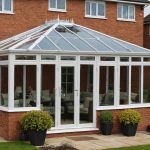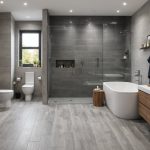Transform your living space with stunning cladding crafted from 95% recycled teak and ipé. This eco-friendly choice combines timeless aesthetics with responsible sourcing, helping reduce deforestation and waste. Beyond beauty, reclaimed wood offers remarkable durability and distinctive character that modern decor demands. Discover how sustainable materials elevate design while supporting a circular economy and conscious renovation choices.
Eco-Friendly Appeal of 95% Recycled Teak and Ipé Cladding
Recycled teak cladding and ipé offer a compelling eco-friendly cladding option, blending sustainability with striking aesthetics. Using 95% recycled teak and ipé for cladding maximizes natural resource conservation while delivering a sophisticated, warm wood tone that enhances modern decor. This sustainable wood decor choice stands out for reducing deforestation by repurposing existing timber, promoting a circular economy for building materials.
A lire également : Transform your space with 95% recycled teak ipé cladding
The environmental benefits of recycled teak cladding extend beyond resource conservation. By choosing reclaimed wood materials, manufacturers significantly reduce carbon emissions associated with harvesting, processing, and transporting new timber. This eco-friendly cladding also helps decrease landfill waste by giving old wood a second life in durable, weather-resistant applications.
Visual inspiration for sustainable wood decor includes outdoor facades, interior accent walls, and decking areas where recycled teak and ipé cladding provide both texture and longevity. The natural grain and rich color variations of recycled teak create unique, tactile surfaces, elevating the ambiance of any space. For innovative transformations using 95% recycled teak and ipé, FIBERDECK showcases how eco-friendly cladding can balance beauty, durability, and environmental responsibility.
A lire également : Creating an Inclusive Garden in Oxford: Tips for Designing Spaces Accessible to Everyone with Mobility Challenges
Sourcing and Sustainability of Recycled Teak and Ipé
Sourcing recycled teak and ipé revolves around using reclaimed wood materials obtained from previous constructions, old furniture, or wood destined for disposal. This practice ensures that high-quality hardwood is given a second life, significantly reducing the need to cut down new trees and helping conserve precious forests. These reclaimed woods are carefully selected to maintain structural integrity and aesthetic appeal, making them ideal for eco-friendly cladding solutions.
One critical aspect of sustainable sourcing is verification through eco-certifications such as FSC certification. The Forest Stewardship Council (FSC) provides assurances that wood products—whether virgin or reclaimed—come from responsibly managed forests or legitimate recycling streams. FSC and similar certifications prevent illegal logging and guarantee environmental, social, and economic benefits, ensuring the reclaimed teak and ipé are harvested, processed, and sold ethically. These certifications play an essential role in giving confidence to consumers and builders seeking true sustainable sourcing.
Using recycled teak and ipé also actively supports a circular economy. Instead of timber going to waste, it is transformed into durable, high-end cladding panels, promoting resource efficiency and reducing the environmental footprint. This approach underscores responsible forestry practices by limiting demand for fresh logging and enhancing ecosystem protection. Plus, wood that might otherwise contribute to landfill or incineration pollution finds meaningful reuse in construction. For those considering sustainable and aesthetic exterior solutions, exploring reclaimed hardwood cladding—whether teak or ipé—is a valuable, environmentally sound option.
For quality and sustainability guaranteed products that embody these principles, FIBERDECK offers expert solutions with 95% recycled teak and ipé cladding that align with eco-conscious project goals.
Installation Guidelines and Considerations
When undertaking the installation of recycled wood cladding, especially materials like teak and ipé, it’s crucial to follow specific guidelines to ensure durability and aesthetic appeal. Whether for interiors or exteriors, preparation begins with choosing a suitable substrate — a stable, dry, and clean surface that supports the cladding without moisture retention. Improper substrate selection can lead to warping or premature deterioration of the wood.
For fixing recycled wood cladding, opting for corrosion-resistant fasteners is essential, as outdoor exposure can accelerate rust and degrade both the fasteners and cladding integrity. Stainless steel or specially coated screws provide longevity and maintain a neat finish. Additionally, maintaining consistent spacing between cladding boards allows for natural expansion and contraction due to humidity changes.
Regarding styles, eco-friendly renovation projects benefit greatly from the versatility of teak and ipé cladding. These woods blend seamlessly with various architectural aesthetics — from minimalist modern spaces to rustic or traditional designs. Their rich color tones and natural grain add warmth and character, making them an attractive option for many settings.
Deciding between professional installation and DIY teak cladding depends on your skill level and project complexity. DIY projects can be rewarding if you have experience handling wood and power tools. However, professional installers bring expertise in addressing potential issues like uneven walls or difficult angles, ensuring a flawless finish. In all cases, adhering to manufacturer recommendations and local building codes enhances the success of your installation.
For more detailed guidance and to explore sustainable wood options, consider visiting resources such as FIBERDECK. Embracing recycled teak and ipé in your renovation not only elevates your design but also supports responsible material reuse.
Performance, Durability, and Maintenance
When choosing durable wood cladding, recycled teak and ipé stand out for their exceptional performance compared to conventional woods. Both teak and ipé possess natural oils and dense grain structures that provide remarkable resistance to weather, pests, and decay. This inherent durability makes them ideal for exterior cladding applications where longevity is a priority.
To maintain this long-lasting recycled cladding, simple care routines are effective and straightforward. Regular cleaning with mild soap and water prevents dirt buildup and preserves the wood’s natural luster. Applying protective oils or sealants annually helps to lock in moisture and maintain the wood’s appearance, especially in harsh weather conditions.
The natural resistance of teak and ipé not only reduces the frequency of maintenance but also safeguards against common issues such as warping, cracking, and insect infestation. This resilience ensures that recycled teak and ipé cladding remains a practical and sustainable choice, delivering both beauty and durability for years to come. For those interested in sustainable options with performance benefits, products like FIBERDECK offer an innovative way to transform spaces using 95% recycled teak and ipé cladding.
Comparing Recycled Wood Cladding to Conventional Materials
When evaluating recycled cladding vs conventional options, several factors emerge, including performance, lifespan, cost-effectiveness, and aesthetic appeal. Recycled wood cladding offers a sustainable alternative to vinyl, composite, and new hardwood cladding, aligning well with eco-conscious building materials objectives.
In terms of performance and lifespan, recycled wood cladding typically matches or exceeds conventional materials. Many recycled cladding products come from old-growth timber, which often has denser, more durable grain than modern lumber. This density imparts longer-lasting resilience against weathering and wear, sometimes outperforming vinyl and composite cladding that can fade or crack over time. Additionally, recycled cladding often benefits from being kiln-dried and treated, enhancing its resistance to moisture and pests.
Considering cost-effectiveness and long-term value, recycled cladding can initially be comparable in price to high-quality hardwood cladding but offers greater longevity and reduced maintenance costs. Unlike vinyl, which may require replacement or repainting over the years, recycled wood cladding develops a natural patina that many homeowners find attractive. This durability translates into lower lifecycle costs, making recycled cladding a smart investment for sustainable home improvement.
An added advantage lies in the unique appearance and story of reclaimed materials. Each piece of recycled wood cladding carries character and history—knots, grain patterns, and occasional nail holes tell tales of previous life. This uniqueness is difficult to replicate with mass-produced vinyl or composite panels, offering an aesthetic depth that enhances architectural character and adds emotional value.
For those interested in combining eco-conscious building materials with an appealing finish, exploring options like FIBERDECK can provide innovative cladding solutions crafted from 95% recycled teak and Ipe wood, offering both sustainability and distinctive style. Such products demonstrate how recycled cladding can be both responsible and beautiful, pushing the boundaries of traditional wood applications.
The Benefits of Recycled Teak Ipe Cladding
Sustainable design meets durability
Using recycled teak ipe cladding transforms your space with a blend of eco-conscious craftsmanship and long-lasting performance. One might ask, what makes recycled teak ipe cladding so beneficial? The answer lies in its exceptional durability, resistance to weather, and environmental impact reduction.
Teak and ipe woods are renowned for their natural oils, making them highly resistant to moisture and decay. This intrinsic property means that cladding made from recycled teak ipe maintains structural integrity and aesthetics over many years with minimal maintenance. By choosing recycled over new timber, homeowners and builders reduce the demand for freshly harvested wood, promoting sustainability and forest conservation.
Furthermore, recycled teak ipe cladding offers a rich, warm appearance that enhances the visual appeal of any exterior space. Unlike synthetic alternatives, this cladding ages gracefully, developing a unique patina without compromising strength.
In practical terms, these benefits result in a low-maintenance, durable, and environmentally responsible cladding option. This supports both aesthetic goals and the imperative of sustainable construction.
When undertaking a project with recycled timber, consider options like FIBERDECK, which utilizes 95% recycled teak ipe. This choice combines outstanding quality with a commitment to reducing environmental footprints, demonstrating how style and sustainability can be perfectly integrated.












